No. 4.7.3
Surface Mount, BGA Pad Repair, Film Adhesive Method
OUTLINE
This method is used to replace damaged BGA pads with new dry film, adhesive
backed pads. The new pads are bonded to the circuit board surface using a specially
designed bonding press or bonding iron.
CAUTION
It is essential that the board surface be smooth and flat. If the base material
is damaged see appropriate procedure.
NOTE
This method uses replacement BGA pads. The new pads are fabricated from copper
foil. They are available in a variety of sizes and shapes and are generally
supplied solder plated. If a special size or shape is needed they can be custom
fabricated.
TOOLS & MATERIALS
BGA Pad Repair Kit
Bonding Iron
Bonding Tips
Bonding System
Circuit Frames, BGA Pads
Cleaner
Epoxy
Flux, Liquid
Knife
Microscope
Oven
Scraper
Solder
Soldering Iron
Tape, Kapton
Tweezers
Wipes
PROCEDURE
- Clean the area.
- Remove the defective pad and a short length of the connecting circuit. (See
Figure 1).
- Use a knife and scrape off any epoxy residue, contamination or burned
material from the board surface.
- Scrape off any solder mask or coating from the connecting circuit. (See
Figure 1).
- Clean the area.
- Apply a small amount of liquid flux to the connection area on the board
surface and tin with solder. Clean the area. The length of the overlap solder
connection should be a minimum of 2 times the circuit width.
NOTE
When desirable, the connecting circuit of the new BGA pad may be inserted into
the connecting via hole of the original BGA pad. Remove any solder mask from the
connecting via hole and prepare as needed.
- The area for the new pad on the board surface must be smooth and flat. If
internal fibers of the board are exposed, or if there are deep scratches in the
surface, they should be repaired. Refer to appropriate procedure.
NOTE
The height of the replaced BGA pad can be critical, especially for eutectic
balled parts. Remove any solder mask between the BGA pad and the connecting
circuit or via hole on the board surface to maintain a low profile. When
necessary, mill slightly into the board surface to ensure that the connecting
circuit height does not interfere with the replaced BGA component.
- Select a replacement BGA pad that most closely matches the surface mount pad
to be replaced. If a special size or shape is needed they can be custom
fabricated. (See Figure 2).
NOTE
New BGA pads are fabricated from copper foil. The foil is plated on the top side
with solder, and an adhesive bonding film is applied to the bottom side.
- Before trimming out the new pad carefully scrape off the adhesive bonding
film from the solder joint connection area on the back of the new pad. (See
Figure 3).
CAUTION
Scrape off the epoxy backing only from the joint connection area. When handling
the replacement pad, avoid touching the epoxy backing with your fingers or other
materials that may contaminate the surface and reduce the bond strength.
- Cut out and trim the new pad. Cut out from the plated side. Cut the length
to provide the maximum allowable circuit overlap for soldering. Minimum 2 times
the circuit width.
- Place a piece of Kapton tape over the top surface of the new pad.
Place the new pad into position on the circuit board surface using the Kapton tape to help
in alignment.
- Select a bonding tip with a shape to match the shape of the new pad. See
bonding tip chart in the replacement parts section of the manual provided with
the repair system or repair kit.
NOTE
The tip used for bonding should be as small as possible but should completely
cover the entire surface of the new pad.
- Position the circuit board so that it is flat and stable. Gently place the hot
bonding tip onto the Kapton tape covering the new pad. Apply pressure as recommended in the
manual of the repair system or repair kit for 5 seconds to tack the new pad in place.
Carefully peel off the tape. (See Figure 4).
CAUTION
Excessive bonding pressure may cause measling in the circuit board surface or may
cause the new pad to slide out of position.
- Gently place the bonding tip directly onto the new pad. Apply pressure as recommended
in the manual of the repair system or repair kit for an additional 30 seconds to fully
bond the pad. After the bonding cycle remove the tape used for alignment. The new pad
is fully cured. Carefully clean the area and inspect the new pad for proper alignment.
(See Figure 5).
- If the new pad has a connecting circuit apply a small amount of liquid flux
to the lap solder joint connection area and solder the circuit from the new pad
to the circuit on the circuit board surface. Use minimal flux and solder to ensure a
reliable connection. Tape may be placed over the top of the new pad to prevent
excess solder overflow.
- Mix epoxy and coat the lap solder joint connection. Cure the epoxy per
Procedure 2.7 Epoxy Mixing and Handling. Use the maximum recommended heat cycle
to ensure the highest strength bond. BGA pads are routinely subjected to one or
more reflow cycles.
NOTE
Additional epoxy can be applied around the perimeter of the new pad to provide
additional bond strength.
CAUTION
Some components may be sensitive to high temperature.
- Apply surface coating to match prior coating as required.
EVALUATION
- Visual examination
- Measurement of new pad width and spacing.
- Electrical continuity measurement.
|
|
|
Solutions Across the Board
TM
|
|
|
|
Product Class: R/F/C
Skill Level: Advanced
Conformance Level: High
Revision: C
Revision Date: May, 8 2001
Repair Service Charge
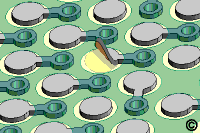
Damaged BGA Pad
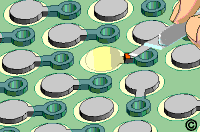
Figure 1: Remove the defective pad and remove solder mask
from the connecting circuit.
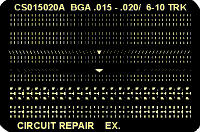
Figure 2: Select a replacement pad that matches the missing
pad.
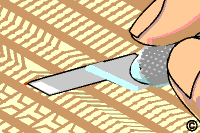
Figure 3: Scrape off the adhesive bonding film from the
solder joint area on the back of new pad.
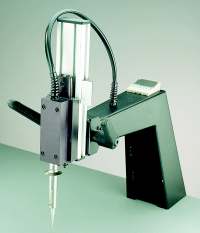
Figure 4: Bond the new pad using a Bonding
System.
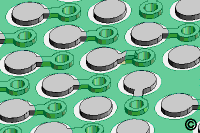
Figure 5: Completed repair.
|
Tricks of the Trade
A challenging, but reliable method for replacing damaged or
missing BGA pads. Replacement pads are available in many sizes and shapes. See Circuit Frames for more information.
|
|
|







